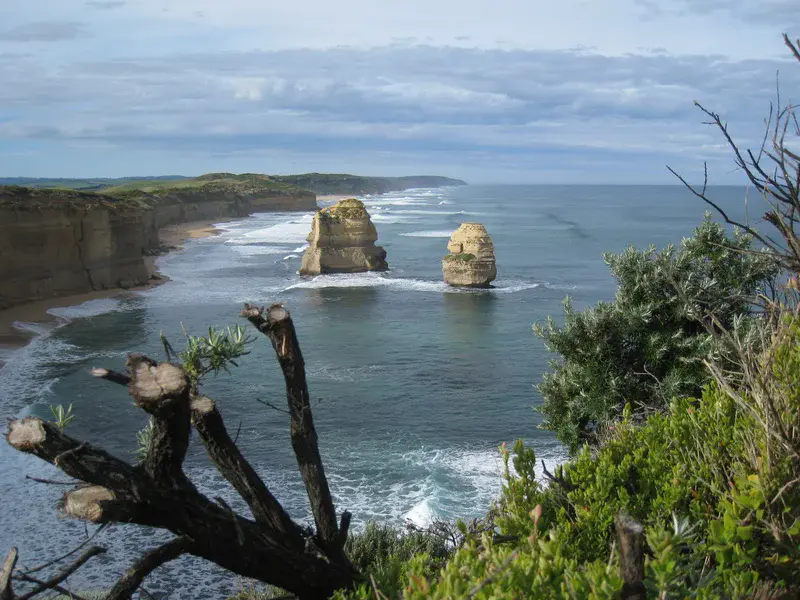
Great Ocean Road
by Fabien Darrouzet, Belgian Institute for Space Aeronomy (BIRA-IASB), Brussels, Belgium
Tucked between the rough Southern Ocean and stunning cliff tops, Australia's Great Ocean Road is one of the world's most scenic routes. The 243-kilometre stretch of road along the country's south-eastern coastline is surrounded by beautiful beaches, lush rainforests, as well as incredible geological formations.
The 12 Apostles, stacks of rocks located in the Port Campbell National Park, are one of the highlights of the route. Two of these structures are visible in this wild scene. Those stacks are composed by miocene limestone rock, and were formed by erosion. The Southern Ocean gradually eroded the soft limestone of the coast to form caves in the cliffs, which then became arches, which in turn collapsed, leaving rock stacks up to 45 metres high.
The wild Southern Ocean with its rough waves is still shaping these rock formations. Due to the strong waves in this area, those stacks are susceptible to more erosion, and can even collapse, as one did in July 2005.
Published on the EGU blog on 4 June 2012: http://geolog.egu.eu/2012/06/04/imaggeo-on-mondays-great-ocean-road/
Featured on GeoLog, the official blog of the European Geosciences Union
Categories
Location
- Oceania (238)
- Australia and New Zealand (224)
- Australia (96)
- Exact location (143.1465 E, -38.6782 S)
Tags
Colours
Image properties
2048 × 1536 px;
image/jpeg; 989.6 KB
Camera:
Canon IXUS 860 IS
Taken on 30
June
2011
Submitted on 13 March 2012
Licence
Creative Commons Attribution-NonCommercial-NoDerivs 3.0 Unported (CC BY-NC-ND 3.0)
Credit
Fabien Darrouzet (distributed via imaggeo.egu.eu)
Share
Appreciate
Report